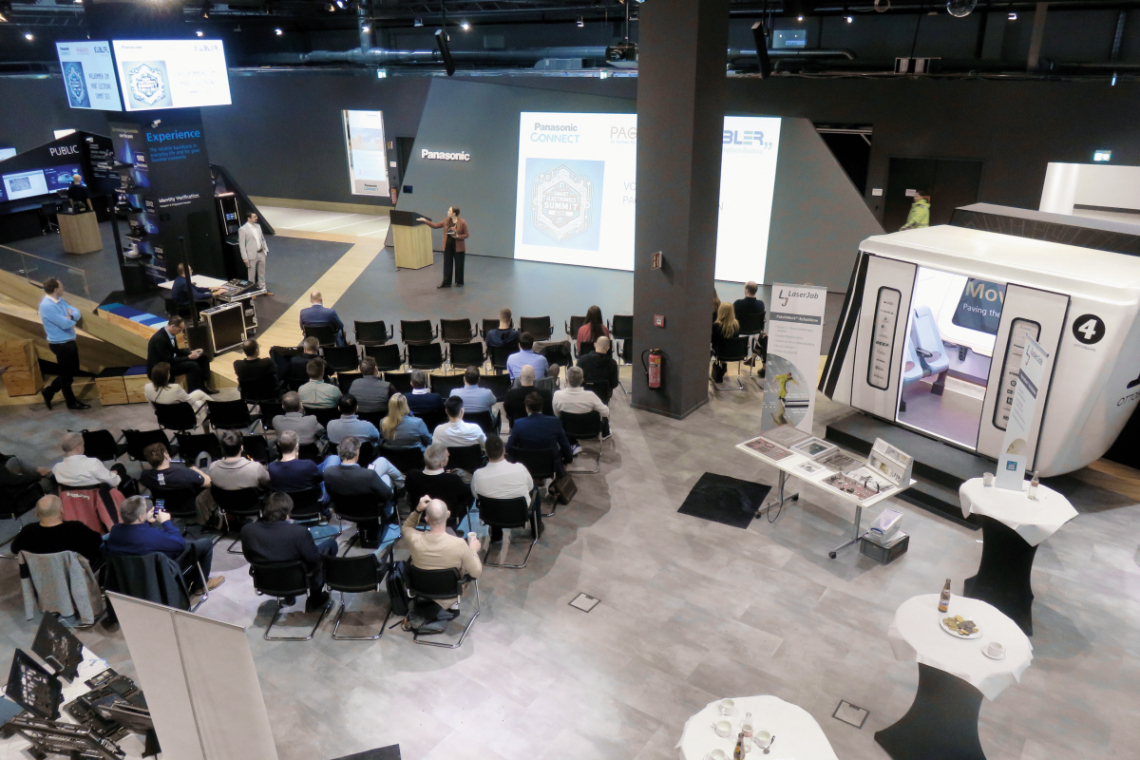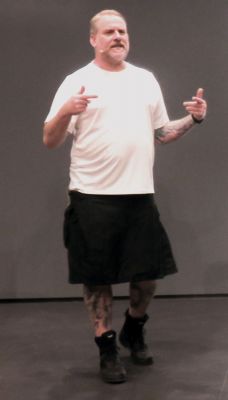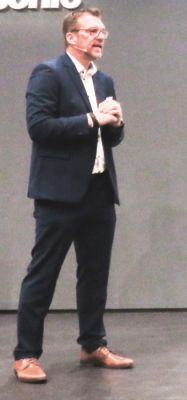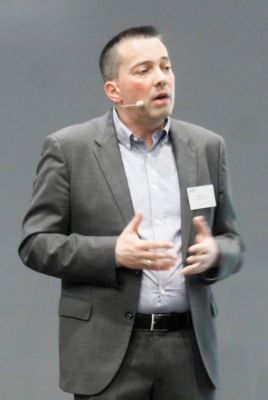Panasonic Connect Europe has launched a new forum for decision-makers in electronics manufacturing. A number of product innovations were presented in talks and live demos. A total of 15 companies took part in the event at the Panasonic Connect Campus Munich.
In his keynote speech, Ulf Oestermann, Fraunhofer IZM, addressed theCO2 footprint and presented the 'Green ICT @ FMD' competence center for resource-conscious information and communication technology. He began by recalling that BP originally coined and promoted the termcarbon footprint in order to shift the perception of responsibility for global warming from the fossil fuel industry to the individual consumer. A lot has happened since then and standards for thecarbon footprint now require the entire life cycle of a product to be considered. In addition, as Ulf Oestermann demonstrated with data, the increasing energy requirements of information and communication technology (ICT) have become a major driver of environmental pollution. This is why the 'Green ICT @ FMD' competence center, in which 15 institutes are involved, supports companies in making their ICT products more resource-efficient. He explained its services and objectives as well as the opportunities for cooperation and then went on to discuss the EU's Corporate Sustainability Reporting Directive (CSRD) and its requirements. In order to fulfill the reporting obligations, it is also necessary to determine theCO2 footprint of AVT processes. Here too, the 'Green ICT @ FMD' provides support. TheCO2 Footprint Calculator is currently being developed as a special tool for this purpose. Ulf Oestermann explained its functionalities and application.
Why Panasonic? - Interview with a customer
This was followed by an interview with Oliver Stelbrink, Auvidea, Denklingen. The company offers design, software support and production and is a long-standing Nvidia Elite Partner. It uses Panasonic systems in its fully automated SMT line to manufacture its own and customer products. During the interview, Sandra Paggen asked him why Auvidea uses Panasonic systems, among other things. Oliver Stelbrink replied that the SMT line is optimized in terms of quality and efficiency and that it is used to produce customer-specific AI carrier boards, among other things. Panasonic systems offer the very high precision and speed required for this, combined with comprehensive monitoring and traceability. Panasonic also supports Auvidea in the further development and scaling of its production.
Smart storage systems
Boris Kübler, Kübler, Altensteig, introduced his company before talking about Arcadia's smart storage systems. Kübler is a family-run sales company that has been offering innovative solutions for electronics manufacturing for many years. These include Arcadia's smart storage solutions, which can be used to manage and trace SMT components, save space and time and avoid errors. Boris Kübler explained the features and functionalities of Arcadia's products. The Archimede SMD Racks are a complete solution that automatically detects and monitors the components or packaging using sensors and signals the status via LEDs. Archimede SMD Cart is a corresponding mobile solution for the provision of components in production. Archimede Smart Bars with the same functionalities offer an easy way to make the warehouse completely intelligent by equipping existing storage racks with them. The Galileo goods-in table is used to register components quickly and securely. Other products such as the Archimede template rack and the Arcadia Setup Station round off the intelligent storage solution.
Sustainable cleaning
Based on the requirements, Stefan Theil, Factronix, Wörthsee, described how sustainable cleaning in electronics can be realized with innovative cleaning systems using chemical reduction, water management and active process monitoring. Prior to this, he introduced his company, which offers advice on all aspects of cleaning as well as support in evaluating, optimizing and monitoring cleaning processes and works together with the companies Zestron and PBT Works. Since electronic assemblies have different contaminants than stencils, solder frames or filters, etc., separate, specific cleaning processes make sense. With innovative hybrid systems, it is possible to clean assemblies and stencils. The cleaning process, including drying, is fully automatic. These cleaning systems, as explained using the examples of PBT SuperSwash and PBT MiniSwash, have very low consumption rates. They are designed for environmentally friendly, water-based cleaning media. A linear 90° spraying process is used for fast and efficient cleaning. Thanks to active water management with a closed loop cascade and ultra-fine filter for treating the rinsing water, rinsing can be carried out without waste water (if the throughput is not too high). Stefan Theil used a case study to show how optimizing the system using fully automatic post-dosing and an organic carbon sensor for the wastewater has an impact on costs and the environment. The right combination of chemicals and system is crucial for good cleaning performance. Factronix recommends customer-specific cleaning tests, which can be carried out at Factronix, Zestron or PBT.
AI and automatic optical inspection
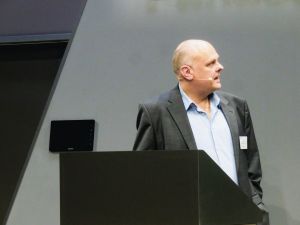 Felix Bernhardt looked at the use of AI at AOI FelixBernhardt, ATEcare, Bergkirchen, presented his company and its portfolio. He then addressed the question of how the use of AI affects automatic optical inspection by explaining the inspection processes and possibilities of modern AOI systems as well as object recognition with AI by extracting features. From the production data, AI is used to quantify the difference between the AI model and the data and assess whether the object is good or not. This can be used for automatic AOI program creation as well as for 3D reconstruction, foreign object detection and OCR (character recognition) during inspection, among other things, as Felix Bernhardt explained using examples. Provided the data quality is high and based on suitable AOI measurement methods, the use of AI can lead to a significant reduction in programming time, error slippage and pseudo errors. Nicolei Ruff, Pacha Automation, Villingen-Schwenningen, used examples to demonstrate that Pacha Automation is redefining automation in electronics production and efficiency. He described how fully automated workstations can now be implemented in a system network and the advantages this brings compared to previous solutions. He went into detail about the equipment of the fully automated workstations, which enable placement control directly at the workstation thanks to an integrated camera system. Nicolei Ruff presented further automation solutions, including a flexible stand-alone solution in the form of a laser cell for PCB marking with a loader and unloader, a system cell for dispensing as an example of the integration of production processes, a loader system for separating magazines and PCBs as well as pick-and-place solutions. MES connections are available for machine communication and production line management (order management, traceability, etc.).
Felix Bernhardt looked at the use of AI at AOI FelixBernhardt, ATEcare, Bergkirchen, presented his company and its portfolio. He then addressed the question of how the use of AI affects automatic optical inspection by explaining the inspection processes and possibilities of modern AOI systems as well as object recognition with AI by extracting features. From the production data, AI is used to quantify the difference between the AI model and the data and assess whether the object is good or not. This can be used for automatic AOI program creation as well as for 3D reconstruction, foreign object detection and OCR (character recognition) during inspection, among other things, as Felix Bernhardt explained using examples. Provided the data quality is high and based on suitable AOI measurement methods, the use of AI can lead to a significant reduction in programming time, error slippage and pseudo errors. Nicolei Ruff, Pacha Automation, Villingen-Schwenningen, used examples to demonstrate that Pacha Automation is redefining automation in electronics production and efficiency. He described how fully automated workstations can now be implemented in a system network and the advantages this brings compared to previous solutions. He went into detail about the equipment of the fully automated workstations, which enable placement control directly at the workstation thanks to an integrated camera system. Nicolei Ruff presented further automation solutions, including a flexible stand-alone solution in the form of a laser cell for PCB marking with a loader and unloader, a system cell for dispensing as an example of the integration of production processes, a loader system for separating magazines and PCBs as well as pick-and-place solutions. MES connections are available for machine communication and production line management (order management, traceability, etc.).
Series of live demos with presentation of new products
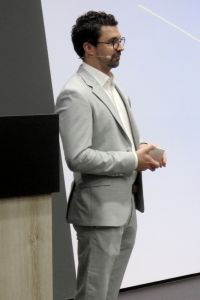 Divided into five groups, the five stations were visited with live demos, where the practical aspects were explored in greater depth.
Divided into five groups, the five stations were visited with live demos, where the practical aspects were explored in greater depth.
Live demo 1 showed the NPM-X series, a highly flexible placement solution for precise component placement. It meets the requirements of current and future high-mix/low-volume assembly and is optimized for all PCB and component sizes. It offers an optimal solution with high speed and high accuracy.
The optional offline camera unit enables the creation of all component data for each machine offline, significantly reducing data creation time. It is an important tool for a zero machine downtime strategy and offers a user-friendly interface and high-precision data acquisition.
In live demo 2, the Auto Setting Feeder (ASF) was demonstrated. It enables autonomous component supply by automatically feeding components, which drastically reduces set-up time and increases efficiency. This technology is an important step towards automation and labor savings in component supply. This is because the beginning of the tape of the new SMD coil is cut with a special tool and inserted directly into the ASF, which can be done during operation. Splicing is no longer necessary.
PanaCIM-Gen2 is a smart factory software suite that synchronizes SMT areas with management systems to increase profitability and efficiency. It enables higher production rates and reduced cycle times through integrated management of the entire SMT production, resulting in improved quality, reduced costs and increased productivity.
In live demos 3 and 4, technology partners presented their solutions in 10-minute keynote speeches:
- Arcadia provided information on its pick-by-light systems and material warehouse management.
- Delvitech looked at artificial intelligence applications in AOI.
- Asscon provided information about condensation soldering and its condensation soldering systems.
- Inertec presented itself and its selective soldering systems.
- Factronix explained its product range, which includes BGA reballing, SMD assembly, cleaning systems, AOI, SPI and IC packaging.
- Pacha Automation provided information about its automation solutions.
- ATEcare gave an overview of its range of products and services.
- Ersa provided information about its soldering technology solutions for electronics production and how they enableCO2 savings. For this purpose, the fans in the zones of the soldering systems can be controlled separately.
The AM100 presented in live demo 5 is a cost-effective, scalable high-mix SMT solution that offers maximum reliability, capacity and flexibility. With a 14-pipette head and space for 160 feeders, the pick and place machine can place a wide range of components, enabling high net productivity and minimal downtime.
The NPM-GP/L stencil printer from Panasonic is suitable for a wide range of applications, particularly due to its modularity and high-precision printing. Innovative features such as automatic support setting, paperless cleaning, stencil tension monitoring and an adjustable squeegee angle minimize production costs and increase product quality.
Conclusion of the event
The new generation of Panasonic machines presented at the Smart Electronics Summit 2025 offers unrivaled flexibility and adaptability, enabling quick changeovers and efficient small batch production. Thanks to cost efficiency through a wide range of options and scalability, high-mix solutions for electronics production can be realized gradually and cost-effectively. The solutions presented also help to reduce energy consumption andCO2 emissions.
In the CXC forum, technology partners LaserJob, Rösnick and Seica provided information about their services and products. Together with the presentations and live demos, this gave visitors a good overview of the possibilities of smart electronics production and they can already look forward to the next Smart Electronics Summit with great anticipation.
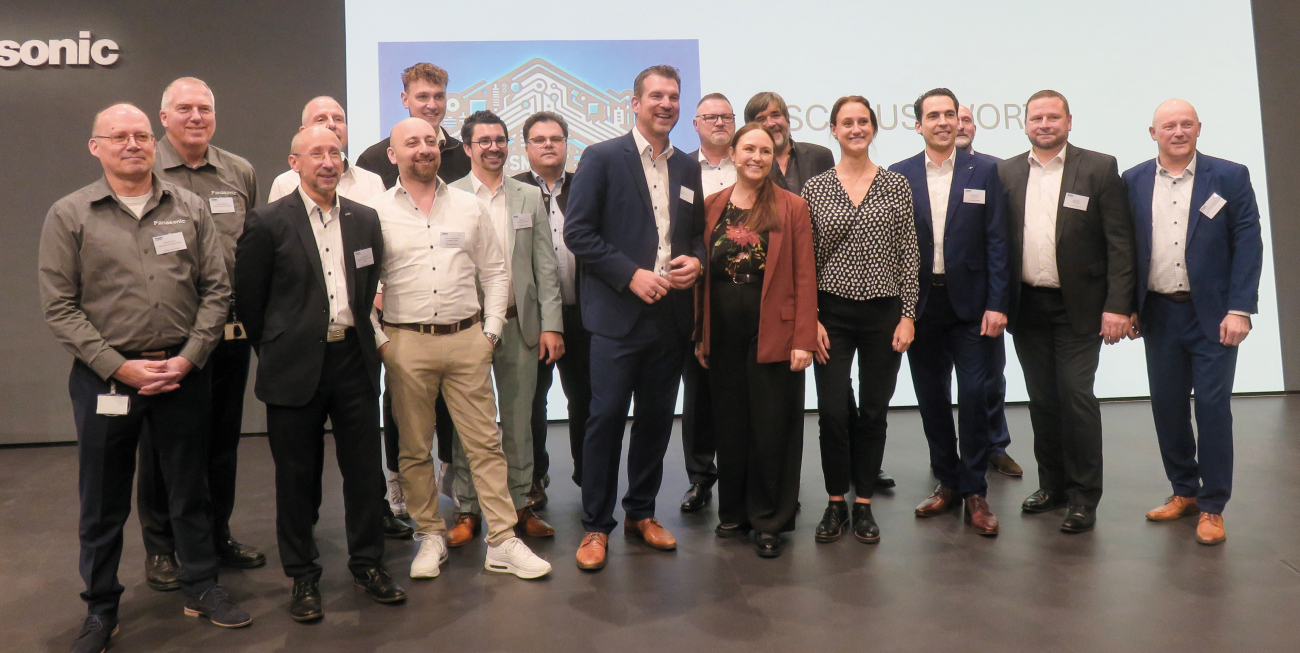 Speakers and exhibitors at the Smart Electronics Summit 2025
Speakers and exhibitors at the Smart Electronics Summit 2025




